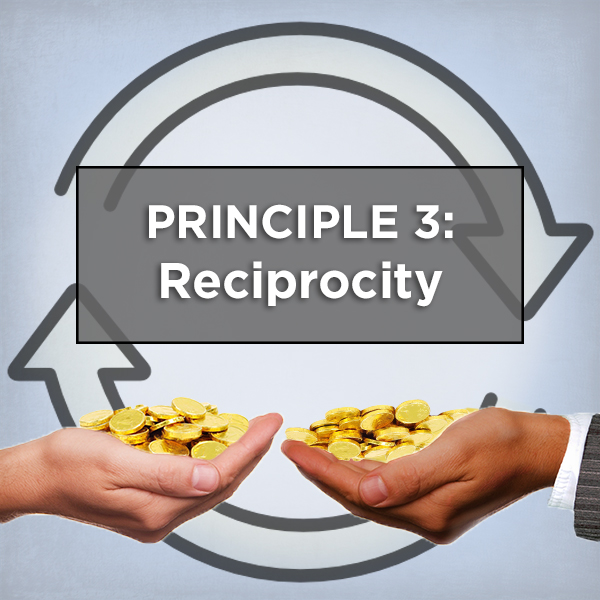Your cart is currently empty!
As we go through the Twelve Master Principles together, we will see two things about them: First, they are all connected to each other in interesting ways, and second, they are all connected to a counterpoint-balancing reality. The balancing point between the principle of Choice and the principle of Reciprocity is an excellent example of this. Recognizing the centering point between all of them (which is Principle One: Transcendence), helps us see the “balancing dynamic” which needs to be sought out in examining any of the twelve.

As noted in Principle One: Transcendence, when Jesus responded to the question asked of Him by an expert in religious law (Matthew 22:35-40), He offered a “twin” counterpoint answer. Jesus explained that the greatest commandment of all was to “love the Lord your God with all your heart, and with all your soul, and with all your mind.” Centering point one, Choice, was the answer between ourselves and God, distinctly personal and distinctly the foundational issue upon which all any other choices would be built. Centering point two, “You shall love your neighbor as yourself,” was the absolute counterpoint to Choice; what I self-centeredly choose must be contained in the matrix of community and be measured by the effect my choices have on others.
Reciprocity is the “bridge principle” that connects God’s creation of unique individuality and self with the “usness” of collective humanity and the “I—thou” reality of myself in the context of all other parts of God’s creation in which I exist. My being and my choices, just like those of God, are totally interconnected with my effect on my surroundings and my surrounding’s effect on me. I trust that the reality of all this abstract thinking is not so intellectual or philosophical that it is dismissed. The concept of balance points to an essentially mature level of thinking. Maturity and God’s call and process for all of us require an interplay between our self-choices and the community context they affect. In maturity, my need must become ours.
On a practical level, the so-called “Golden Rule” Jesus gives in Luke 6:31 tells us in modern parlance, “What goes around, comes around.” In other words, the way we treat others is the way we should expect to be treated. Why so? Because our social choices determine the kind of people we attract. The fundamentally selfish run with others who are fundamentally selfish and, conversely, those who think in terms of community seek out others in community. Even the Eastern concept of “karma” recognizes this social reality; we tend to produce fruit “according to our kind” (Genesis 1:24, and used nine other times) and similarly seek out our own kind of people. Self-centered people tend to run together, yet even the self-driven recognize at some level that self-centeredness greatly limits the amount of trust we can extend to others, thus highlighting the need for “enlightened self-awareness.”
As we will see when we examine Principle Twelve in December, the principle of Reciprocity has everything to do with the Bridge of Trust. It is also deeply related to Justice, Principle Ten which we will cover in October. Reciprocity leads us to expect from others what we have sown into them. Justice is all about investments and their returns. Wisdom recognizes that the principle of Reciprocity is not just an essential character virtue; it helps protect us from others who would use us selfishly.
I trust this amended discussion has made clearer the dance between choices and the context of living with and for others. That which is reciprocal is a path towards God and His ways. He is indeed reciprocal because reciprocity can be another word we use for love, and that is…
THE BOTTOM LINE.
Questions for Reflection & Discussion:
- In your own words, how would you define “reciprocity?”
- What is a “balancing point” when dealing with the relationship of related principles?
- How does reciprocity alter our decision-making choices?
This article is part of a broader series on the TWELVE MASTER PRINCIPLES. View previous issues at: THE BOTTOM LINE ARCHIVES
